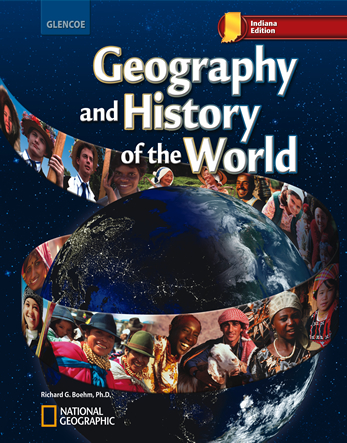

Geography and History of the World © 2010 Indiana EditionChapter 9: Cultural Geography of Latin AmericaChapter OverviewsThe region's population of 520 million people lives in 33 countries. It includes a mix of Native Americans, Europeans, Africans, and Asians. European colonists settled in areas earlier ruled by Native American empires, only to be overturned through independence movements in all but a few Caribbean island countries. Today indigenous language, religion, art, and lifestyles have been blended with those of Europe and Africa.Mexico Mexico has been shaped by the civilizations of the Maya and the Aztec, and by the Spanish. It is rapidly urbanizing, with the regions largest megacity: Mexico City. The Maya civilization developed in southern Mexico and northern Central America. They were agricultural and trade based societies, who were highly skilled in mathematics. In the 1300s the Aztec civilization arose and expanded until the arrival of the Spanish in the 1500s. The Spanish conquered much of Latin America. After a long struggle Mexico gained its independence in 1821. Today Mexico is a federal republic. Mexico’s official language is Spanish, but many indigenous languages are spoken. Roman Catholicism and indigenous religions are practiced and sometimes blended together. There is public education and health care, although it is of poor quality. Art and sports are influenced by Spanish and indigenous cultures. Central America and the Caribbean Native American, European and African cultures have shaped this subregion. The proportion varies from nation to nation. Caribbean nations tend to more densely populated than Central America. Columbus arrived in 1492 leading the Spanish to conquer the region. Trade between Europe and the Americas, called the Columbian Exchange, brought many new plants, animals, diseases and ideas to the region. The Europeans also introduced slaves. In the late 1700s the subregion began to push for and receive independence, although some islands are still under foreign control. Spanish, French, English, and Dutch are spoken through the region, although in many dialects or patois. Arts and sports are influenced by Native America, European, and African cultures. In many countries in the Caribbean the family structure is matriarchal. South America South America’s culture is influenced by indigenous, European, and African groups. It is marked by a population moving from rural to urban areas, and from poorer countries to wealthier ones. Urbanization is happening faster than the ability of cities to provide the necessary infrastructure. Early groups in South America established agricultural societies. The Inca later established a highly developed, hierarchical, society. Later Spanish conquistadors conquered much of the region, with the Portuguese, British, French and Dutch colonizing the rest. Enslaved Africans were imported into the region. In the 1800s independence movements began, and nearly all the countries of the subregion are independent. Spanish, Portuguese, Dutch, and French are all spoken in the region, although many indigenous languages survive today. Rapid urbanization has strained the health and education system of many countries. The arts and leisure are influenced by Native America and European cultures. |  |















